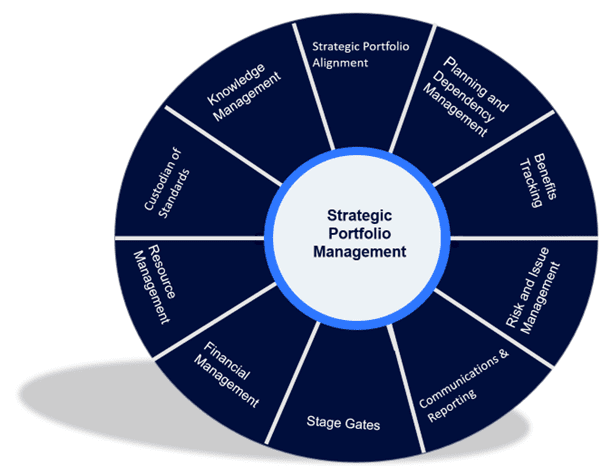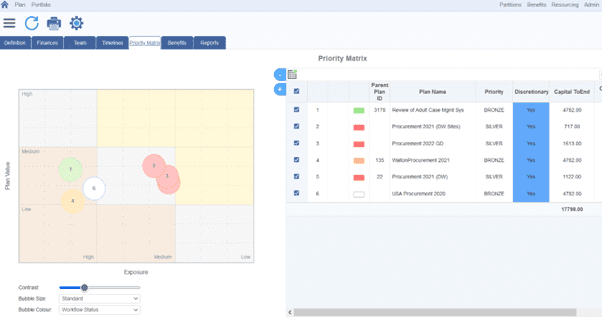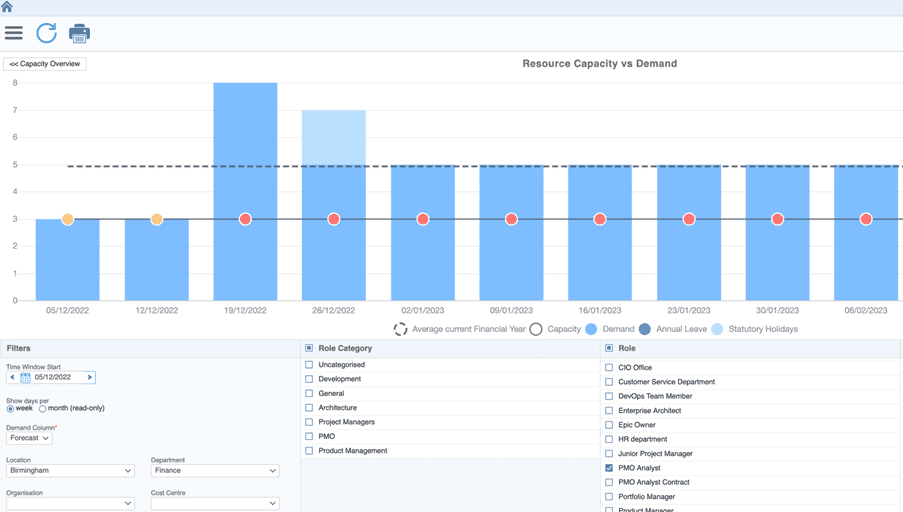David Walton
A Project Management Office (PMO) is a group that supports and oversees project management activities in an organization. In this blog we cover what a PMO should do and more importantly should not do!
PMBok defines a PMO as:
An organizational structure that standardizes the project-related governance processes and facilitates the sharing of resources, methodologies, tools and techniques.
Source PMBok Book of Knowledge
They help with strategic direction, standardisation, process improvement and other functions related to the successful management of projects. PMOs are often initiated by C-level executives who want to improve the way their organisations deliver projects. In this blog we will look at a helpful analogy and the key process areas that are often managed by leading PMOs.

In working out what a PMO should do to create real value for an organisation, it is useful to use an analogy. A PMO is like Air Traffic Control.
Air Traffic Control (ATC) does not fly the planes. The safe flying of planes is done by the pilots. The pilot is analogous to the project manager. The PMO does not run the projects. The pilot is responsible for safely flying the passengers to a destination. The project manager is responsible for safely delivering the project.
To ensure that multiple flights take off and land safely, the air traffic control will ensure that there are minimum standards in place. Flight plans have to be logged with air traffic control. Similarly, project plans or schedules should be loaded into your PPM tool so that the project management office has access to all these project schedules. Air traffic control has a holistic view of all flights and will assess risks to these flights. For example, other planes may be on a collision course or stormy weather could be ahead. These risks can be overcome by changing flight plans and diverting a plane away from flight risks. This is similar to risks that are faced with projects that are in flight. The project management office will need to request changes not to flight plans, in this case, but project plans to avoid project collisions or other types of turbulence that projects may face
Air traffic control has a similar role to the project management office. They are both tasked with ensuring flights and projects take off and arrive safely and ideally on time.
Building on the ATC analogy, all flights and projects should have a minimum set of quality or safety standards. You would not expect a pilot to have a poor-quality flight schedule. Nor should you expect the project manager to have a sub-standard project plan or schedule. Rather than be subjective as to what is a minimum standard of flight plan or project schedule, the monitoring organisation, that is the PMO or air traffic control, need to set minimum standards. A plane would not be allowed to take off if its flight plan does not meet the minimum acceptable standard. Similarly, a project should not be allowed to be launched if certain minimum standards, as defined by the PMO, are not met.
The number and type of standards that a project management office need to set and enforce will partly be determined by the PMO service catalogue.
The PMO Service Catalogue
The service catalogue will vary per organisation, but this graphic contains some common process areas that a PMO typically manages.
The Service catalogue is dependent on the needs of the organisation and also its maturity.

Strategic Portfolio Alignment
This is one of the most important functions that a PMO can provide. The end goal is to build a portfolio of projects or a roadmap that support the organisation’s strategic drivers. The Project Management Office manages this process and is an independent voice when deciding which potential projects should form part of the approved portfolio. Without an objective voice provided by the PMO, there is a danger that the projects that form the roadmap are not the optimum set. For example, a project could be part of the portfolio or roadmap if a senior executive shouts loudest.

PM3 Screen showing strategic portfolio alignment
Dependency Management
The project management office needs to create an overall dependency map. This dependency map is ideally a pictorial view of the key dependencies.
The PMO will capture information on the key dependencies and ensure that each project conducts a replanning exercise based on the slippage in other projects that affects their projects.
The overall goal is to ensure that the portfolio plan reflects the latest reality.
Benefits Management
Defining benefits is an important part of any project. The business case of each project will partly depend on the benefits that are estimated to be delivered as a result of the project. Like other processes, the project management office needs to define a minimum set of standards and a consistent approach. This is important for the project prioritisation process that we described above.
The PMO is not responsible for completing the individual benefit plan but can advise the project manager on how best to construct the benefits plan to ensure all plans are of an acceptable quality.
The project manager is responsible for tracking the actual benefits being delivered, and the project management organisation needs to ensure that this tracking of actuals is being completed. This is, of course, can be done using PM3, Bestoutcome’s PM tool.
Risk and Issue Management
Like other processes the PMO sets the standards in PM3 and ensures that these minimum standards are being met by the project teams. For example, some projects may have defined risks but may not have set avoidance or mitigation factors. The project management office needs to ensure that these mitigations are appropriate and entered into the PPM tool’s risk matrix.
Once standards have been set and the risks and issues have been adequately completed, the PMO will need to assess if any of these project level risks and issues are indeed portfolio level risks and issues.
The project management office does not, however, complete the risk and issue registers for individual projects; this is the responsibility of the project teams.
Communications and Reporting
High quality reporting that is timely and pertinent to each group of stakeholders is an important role that the project management office is responsible for. As in other processes, the PMO is not responsible for all reporting. They are responsible for setting standards of reporting and checking that the project managers are adhering to a minimum set of standards.
It is not the responsibility of the project management office to complete the status reports for individual projects.
Stage Gate Process
The project management office is responsible for implementing the gateway sets and the criteria that need to be passed within each gate. These gates are configured within a PPM tool like PM3 and projects can choose which gateway set is most appropriate for their particular project.
The PMO can assist the project and programme managers in preparing their gateway submission. They should not, however, complete the gateway submission as this is the responsibility of the project or programme manager.
The project management office needs to maintain a repository of stage gate submissions and evidence. Of course, using PM3, our PPM tool, this is straightforward as all the gateway history and evidence is held in PM3.
Financial Management
The project management office needs to set some financial planning standards for projects and programmes. Once set, the PMO needs to ensure compliance by the project teams to these standards otherwise a consolidated view of all the projects and programmes in the portfolio will not be possible.
For example, the PMO provides management with an overall forward-looking view of the financial plan of the portfolio, but the Project Management Office is not responsible for completing project financial plans or benefits; this is the responsibility of the project team.
The project management office sets standards in financial planning. They also need to ensure that these planning standards are being maintained.
Resource Capacity Planning
Again, as in most process areas managed by the PMO, the project management office needs to set a minimum set of standards around resource management
The PMO needs to ensure that all projects have adequate resource plans in a PPM tool like PM3 as the Project Management Office needs to add all the resource estimates to get a macro picture of all resources requested against the capacity of the project staff. The PMO does not complete resource plans for projects.

Example of a resource / capacity screen in PM3
Custodian of Methods and Standards
As we mentioned in the Air Traffic Control analogy, it is important to define a set of minimum standards. Once these have been defined the Project Management Office needs to ensure that the projects are being managed to these standards. Adherence to standards are important not just to deliver projects in a quality manner but so that the PMO can produce the portfolio level reporting and analysis for senior management.
If all projects work in a different way it will be very difficult or impossible to produce accurate and meaningful portfolio information.
The PMO needs to gather feedback on the standards being used. This feedback may result in changes to the standards being used. The Project Management Office is responsible for managing changes to standards and then promulgating these changes to the project management community.
Knowledge Management
When project managers operate in silos there is usually very little sharing of knowledge. The project management office can facilitate the sharing of knowledge and lessons learnt.
In addition to ensuring that lessons are being logged, the project management office can help onboard new project staff. This should entail a briefing on project methodology standards and how to use PPM toolsets like PM3.
Don’t be a lowest-common-denominator PMO
What’s the worst thing you can do as a PMO? Make it a lowest-common-denominator PMO, that is, a box ticking, administration centre. These PMOS tend to be seen as what they are, i.e a cost centre that is an irritant to project management. Their longevity is often quite short.
You need to build your PMO around business needs and use tools to support the process.
Conclusion
Building a PMO is not a one-size-fits-all endeavour. You need to work out the services that your organisation would benefit most from a PMO. Try and avoid the administrative-based PMO as these have a short shelf life and add little value.
You also need to be clear as to what a PMO does and what it doesn’t do. Here, the air traffic analogy is a good one to use. ATC does not fly the plane but set standards and ensures planes all land safely and arrive on time.

Our products help you deliver successful change programmes and projects by always focusing on the overall business outcomes. Find out how our products can help you.
Tell me more Request a demoProjects are all about change and every organisation needs to ensure that change is implemented effe...
Read more >Many organisations are waking up to the fact that a PMO is a critical part of their governance organ...
Read more >It is hardly big news but the level of change is increasing. Any organisation that sits on its laure...
Read more >